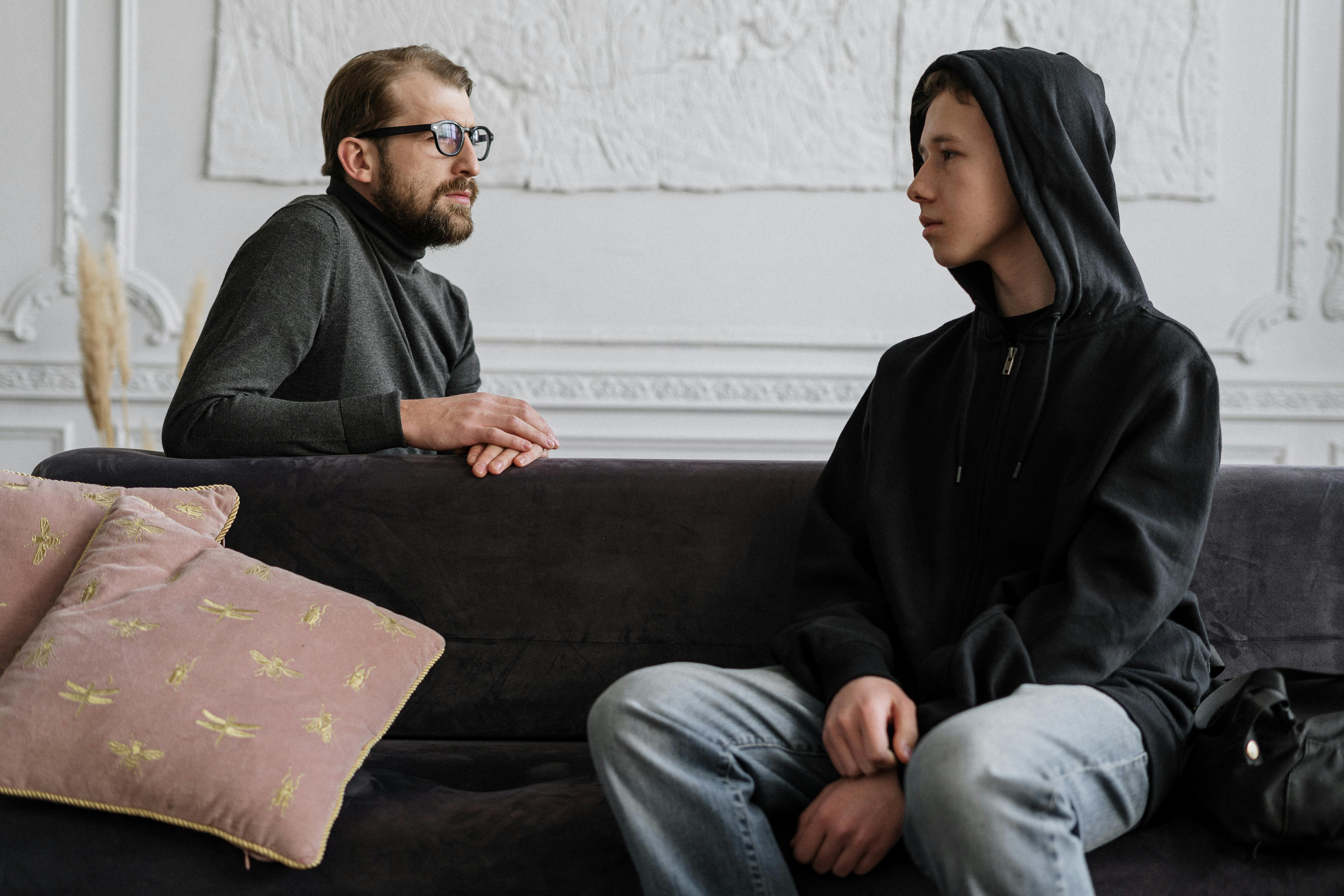
Automated Defenses: Safeguards Built for Young Users
Beyond the manual controls parents can set, AI platforms like ChatGPT are increasingly incorporating automated safeguards designed to protect teen users by default. These features are built into the system to create a safer experience right out of the box.
Enhanced Content Filters, Automatically
When a teen’s account is linked to a parent’s, additional layers of content protection are often automatically activated. These enhanced safeguards are specifically designed to filter out or reduce the presence of potentially harmful or inappropriate material. This can include measures to decrease exposure to graphic content or to limit prompts and responses related to risky viral challenges that could pose dangers to young users. These automated protections operate on the principle of offering a safer default experience, reducing the immediate need for parents to manually filter everything, though parents typically retain the option to adjust or disable these specific protections if they feel it’s appropriate for their child.
Age-Appropriate Interactions as the Standard. Find out more about ChatGPT parental controls for minors.
The system is typically configured to adhere to age-appropriate content guidelines by default for linked teen accounts. This means the AI’s responses and interactions are intended to remain within boundaries suitable for younger audiences. This proactive filtering aims to prevent the AI from generating content that is sexually explicit, violent, or otherwise unsuitable for minors. While the specific algorithms and thresholds for these guidelines are complex and constantly evolving, their implementation is a crucial component of the automated safety net designed to make platforms like ChatGPT more secure for adolescent exploration and learning. It’s about building a digital environment that respects the developmental stage of young users.
Specialized Care for Sensitive Topics
For conversations that delve into sensitive subjects—particularly those involving mental health struggles, self-harm, or suicidal ideation—OpenAI is implementing significant safety upgrades. These specific interactions are being routed through a specialized version of ChatGPT’s model. This tailored model employs advanced techniques, such as deliberative alignment, to respond more cautiously, resist manipulative or adversarial prompts, and adhere strictly to established safety guidelines. The intention here is profound: when users, especially vulnerable ones, express distress, the AI is designed to respond with increased care and gently direct them toward appropriate resources rather than providing potentially harmful information. This is a critical development for an AI that can engage with users on such deeply personal and emotional levels.
Watching Over Them: Proactive Monitoring and Alerts. Find out more about ChatGPT parental controls for minors guide.
The safety net extends further with proactive monitoring systems designed to detect potential issues and alert parents when necessary. This moves beyond passive filtering to a more active approach to user safety.
Spotting the Signs: Detecting Emotional Distress
A significant advancement in AI safety features involves its capacity to detect possible signs of self-harm or emotional distress within user conversations. The AI’s systems are being trained to identify concerning patterns and language that might indicate a user is experiencing a mental health crisis. This detection mechanism is a crucial step towards providing timely support and intervention. It moves beyond simply filtering out bad content to actively identifying user vulnerability. This capability is developed with guidance from mental health experts to ensure accuracy and sensitivity in interpretation, aiming to provide a helpful, albeit digital, early warning system.
A Notification System for Parents. Find out more about ChatGPT parental controls for minors tips.
When the AI detects activity that suggests a serious safety risk or significant emotional distress, a notification protocol can be triggered for parents. This system aims to alert guardians in critical situations, providing them with the necessary information to offer support to their teen. Parents can often opt to receive these alerts via various channels, including email, SMS, or push notifications, offering flexibility in how they stay informed. However, it’s crucial to understand that this notification system is not a form of universal surveillance. Parents typically only receive alerts in rare cases where the system, often corroborated by trained reviewers, detects signs of serious safety risk and deems it essential for the teen’s support.
Limited Oversight for Critical Moments
It’s important for parents to understand that they do not have general access to read all of their teen’s conversations. This privacy boundary is maintained intentionally to allow teens a degree of autonomy and to prevent overbearing surveillance, which can be detrimental to trust. However, in exceptionally rare circumstances, where the AI system and human reviewers identify potential signs of serious safety risks, parents may be notified. The information shared in such notifications is carefully curated and limited to what is strictly necessary to support the teen’s safety. This strikes a delicate balance between providing essential parental oversight and respecting the teen’s privacy. This limited but critical oversight mechanism is designed to intervene only when absolutely necessary for the child’s well-being.
Building Bridges: Collaboration and Expert Input. Find out more about ChatGPT parental controls for minors strategies.
The development of sophisticated AI parental controls isn’t happening in a vacuum. It’s a testament to collaboration and the integration of external expertise.
The Crucial Role of Mental Health Professionals
The development of ChatGPT’s parental controls and safety features has been significantly informed by input from councils of experts. These councils often include professionals with deep expertise in areas such as youth development, adolescent psychology, mental health, and human-computer interaction. Their guidance is instrumental in helping companies like OpenAI define well-being metrics, prioritize safety features, and design future safeguards. This collaborative effort ensures that the AI’s responses and the control mechanisms are grounded in the latest research and best practices concerning adolescent psychology and digital well-being. It’s about moving beyond purely technical solutions to consider the humanistic aspects of AI interaction.
Forging Partnerships: Advocacy Groups and Policymakers. Find out more about ChatGPT parental controls for minors overview.
OpenAI has also actively engaged with external organizations to shape these new functionalities. Partnerships with reputable advocacy groups, such as Common Sense Media, and consultations with policymakers, including Attorneys General from various states, have played a significant role in the design process. This collaborative approach helps ensure that the parental controls are not only technically robust but also align with broader societal expectations and regulatory considerations for child online safety. Working with these diverse stakeholders helps address a wider range of concerns and build trust in the AI platform’s safety architecture. Such partnerships are vital for navigating the complex ethical terrain of AI.
Responding to the Times: Legal and Ethical Imperatives
The rollout of these controls is also a direct response to evolving legal and ethical considerations within the AI space. High-profile lawsuits and intense public debates have underscored the critical need for AI developers to take greater responsibility for the safety implications of their products, particularly when they interact with minors or vulnerable individuals. By proactively implementing robust parental controls and enhancing safety features, OpenAI is addressing these imperatives. This demonstrates a commitment to navigating the complex ethical landscape of artificial intelligence and aims to set important precedents for accountability in AI development and deployment. As AI technology continues its rapid advance, responsible development practices become non-negotiable.
Looking Ahead: The Broader Impact of AI in Family Life. Find out more about How to set up AI parental controls ChatGPT definition guide.
The introduction of comprehensive parental controls in AI platforms like ChatGPT signifies a major shift in how these technologies are being integrated into the fabric of family life. It’s an acknowledgment that AI is no longer just a tool for adults; it’s a component of the digital environment experienced by children and teenagers every day.
AI’s Growing Role in the Home
This development points toward a future where AI platforms will increasingly offer customizable experiences tailored to different age groups, with parental oversight becoming a standard, expected feature. It encourages a more deliberate and conscious approach to adopting AI technologies within the home, fostering essential dialogues between parents and children about responsible digital citizenship and AI literacy. Understanding the capabilities and limitations of AI, alongside the tools to manage its use, is becoming as crucial as teaching kids about online privacy or cyberbullying.
The Road to Automatic Age Verification
While the current parental control systems rely on active linking between parent and teen accounts, OpenAI and others have indicated a broader vision that includes developing automatic age verification or prediction systems. The ultimate goal is to automatically detect if a user is under 18 and apply the appropriate protections without requiring manual setup by parents or teens. This future-oriented development aims to make safety measures more seamless and universally applied, further enhancing protection for minors across the board. The current parental control system can be seen as a vital step toward achieving this more automated and comprehensive approach to AI safety for younger users.
Building Trust Through Safety
Ultimately, the rollout of parental controls is a strategic move to build trust with users and foster a culture of responsible AI use. By providing transparency, control, and enhanced safety features, companies aim to alleviate parental concerns and encourage a more informed and confident engagement with their technology. This initiative underscores a commitment to developing AI that is not only powerful and useful but also safe, ethical, and aligned with human values. As AI continues its rapid integration into our lives, comprehensive safety measures like these will be absolutely crucial for ensuring its widespread acceptance and positive integration into society. They are a cornerstone for responsible innovation. Key Takeaways for Parents: * Stay Informed: Keep up-to-date with the latest AI safety features and understand how they work. * Communicate: Talk openly with your teens about AI, its benefits, and potential risks. Involve them in setting up controls. * Utilize Controls: Explore and configure the parental controls available for AI platforms your teen uses. * Prioritize Balance: Use features like quiet hours to ensure AI use doesn’t interfere with sleep, schoolwork, or family time. * Focus on Education: Teach critical thinking skills so teens can better evaluate AI-generated content. The digital landscape is constantly evolving, and parental controls for AI are a vital tool in helping us navigate it safely with our children. By understanding and utilizing these features, we can empower our teens to harness the power of AI responsibly.
